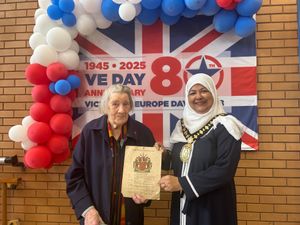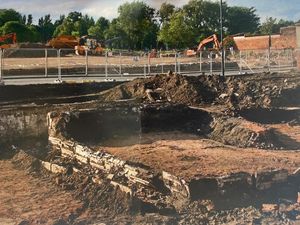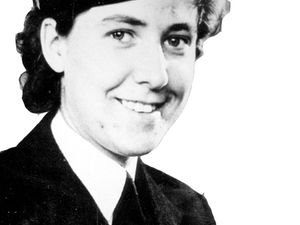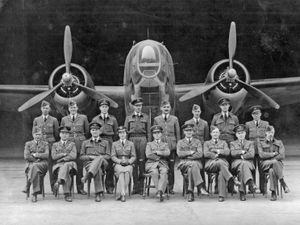40 years since Metro flew the flag for British car industry
There wasn't a Spitfire fly-past, Or any references to 'Frogs' and 'Jerries' – there weren't even any direct mentions of the war, but the subtext could scarcely have been clearer.
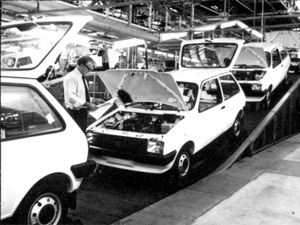
The white cliffs of Dover, a Rule Britannia sound track, a line of retreating landing craft, and a voiceover telling us how we were going to 'send the invaders back from where they came'.
And the secret weapon in fighting off these pesky foreigners? Er...the Austin Mini-Metro.
It is 40 years since the ailing state-owned car manufacturer launched the car which would shape a generation.
This wasn't just a car launch. It was a call to arms.
Over the past decade, our car industry had become a totem of Britain's decline on the world stage.
Riven with industrial unrest and weak management, British Leyland vied with British Rail as the default subject of every stand up comedian.
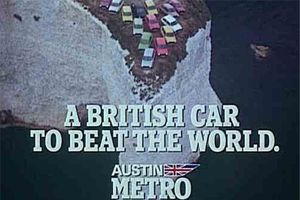
This was the last chance to save the industry.
British Leyland, formed in 1968 following an ill-fated merger between Leyland Motors and British Motor Holdings, had been haemorrhaging money for years.
The group's first new car, the oddball Austin Maxi, fell flat the moment it was launched. Its second, the Morris Minor-based Marina, sold moderately well, but became a byword for penny-pinching mediocrity.
The Austin Allegro, which replaced the top-selling 1100 and 1300 models, was little short of a disaster, beset with stories about windows popping out, wheels flying off, and ridicule over its infamous square steering wheel.
Even the Rover SD1 and Princess, which were well-received on launch, quickly became notorious for poor reliability, not helped by constant industrial unrest.
So bad was the situation by 1975 that the Government partially nationalised British Leyland to prevent its collapse.
Plans had been in place to replace the ageing Mini since the early 70s, but had been dropped due to lack of finance and poor reaction from prospective customers.
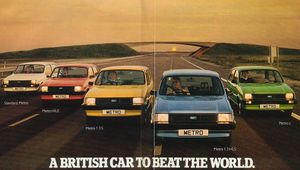
By the mid-1970s, the success of the Fiat 127, Renault 5 and Ford Fiesta showedthe trend was for slightly larger hatchback 'superminis', and the proposed Mini replacement was hastily redesigned to meet this demand.
The other problem British Leyland had was the intense media scrutiny, which not only meant there would be no room for slip-ups, but also it proved near-impossible to keep any details of the car a secret.
The name of the new car was also causing a headache. While 'Metro' had been chosen after a ballot of its workforce, it quickly fell foul of the train and bus builder Metro-Cammell, and the problem was only resolved when Leyland agreed to add the short-lived 'Mini' prefix to the name.
Finding a suitable venue to launch a car to 1,500 dealers was also problematic, particularly given that dealers were expected to contribute to the cost.
It was also essential, given the importance of the car to the company's survival, that the launch would have the 'wow' factor – ensuring the car would capture the imagination of the dealers.
Monaco was initially touted, but didn't really sit well with the 'Buy British' message.
As Ken Clayton, the man in charge of the dealer launch, struggled for ideas, his boss Tony Cummings half-jokingly pointed out that HMS Ark Royal was being decommissioned.
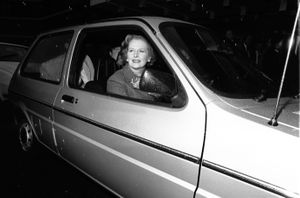
While it wasn't a serious suggestion, the accommodation would be nowhere near an acceptable standard, it gave Clayton an idea. The Metro would be launched on a chartered cruise ship in the Irish Sea.
Of course, it proved impossible for Britain's biggest car manufacturer to hire a cruise-liner for a large number of short journeys without the media getting wind of what as going on, and by the time the car was launched, it was already Britain's worst-kept secret.
Press photographers snatched pictures of the car being loaded onto the ship, yet there was also a mood of genuine goodwill, and a desire for the new car to do well.
After all, a lot of taxpayers' money was riding on it.
One thing that wasn't onside, though, was the Great British weather.
Choppy waters left many dealers seasick by the time the Metro was revealed, and dealer Richard Williams recalled many of his colleagues heading for the toilets the moment the British Leyland roundel started rotating on the stage to the music of Land of Hope and Glory.
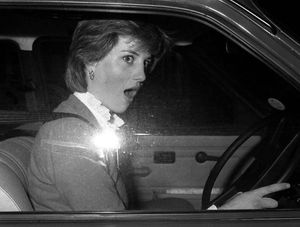
"The rotating roundel slowly opened and smoke came out lit by the blue light," said Williams.
"Then, from out of the smoke, on an hydraulic arm, appeared the new Mini Metro."
"It was spectacular. There was a huge and much-deserved standing ovation.
"The car was every bit as good as described. It had its own unique style, it was spacious yet economical.
"It was competitively priced and made you proud to be British."
A British Car to Beat the World, was how it was marketed, and for once it seemed everyone was in agreement.
Prime Minister Margaret Thatcher was among the first to drive one, Prince Charles' fiancée Lady Diana Spencer bought one, it even became a somewhat unlikely schoolboy pin-up, with Corgi producing a special launch edition in a box emblazoned with Churchillian quotations.
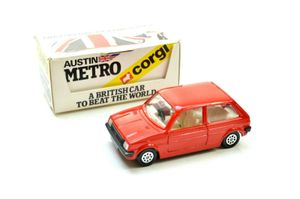
As Metro-mania swept the UK, it was seen almost as a patriotic duty to drive a small hatchback built in Birmingham.
"At last a British car that no-one needs apologise for," wrote Steve Cropley, of Car magazine.
The industrial unrest largely subsided with the sacking of firebrand union convenor Derek 'Red Robbo' Robinson.
The Metro became not only Britain's best-selling car, but also won a place in the nation's hearts as the car millions learned to drive in.
It also became a powerful cultural symbol of the new decade, a fresh start after the turmoil that had gripped Britain for much of the 1970s.
While it didn't quite 'send the invaders packing', there was no doubt that Metro-mania had saved the day. For a time.
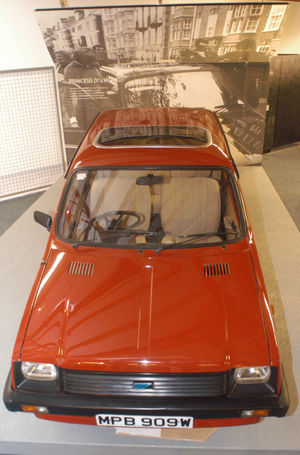
But just as the new car lost its sheen when the age-old problems of poor build quality and lack of product development became evident, a slew of yet more poorly conceived and badly executed models led to the company's collapse.
Just as Metros sporting rusty front wings became an increasingly familiar sight on British roads, the company which made them was also slowly disintegrating.
The Metro soldiered on until 1997, by which time the rust problem had largely been cured, but the renamed MG Rover Group shut its doors in 2005.
The closure marked the end of 100 years of car production at Longbridge – aside from the assembly of a small number of Chinese MGs a few years later – and with it the demise of Britain's last volume car manufacturer.
Suddenly, Metro-mania seemed a very long time ago indeed.

